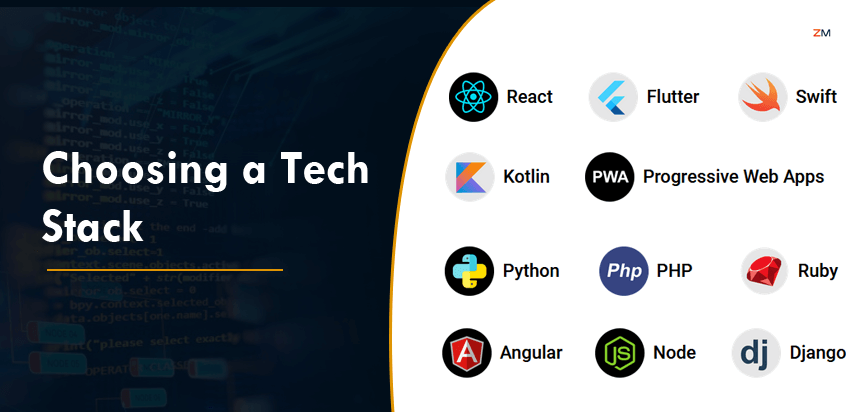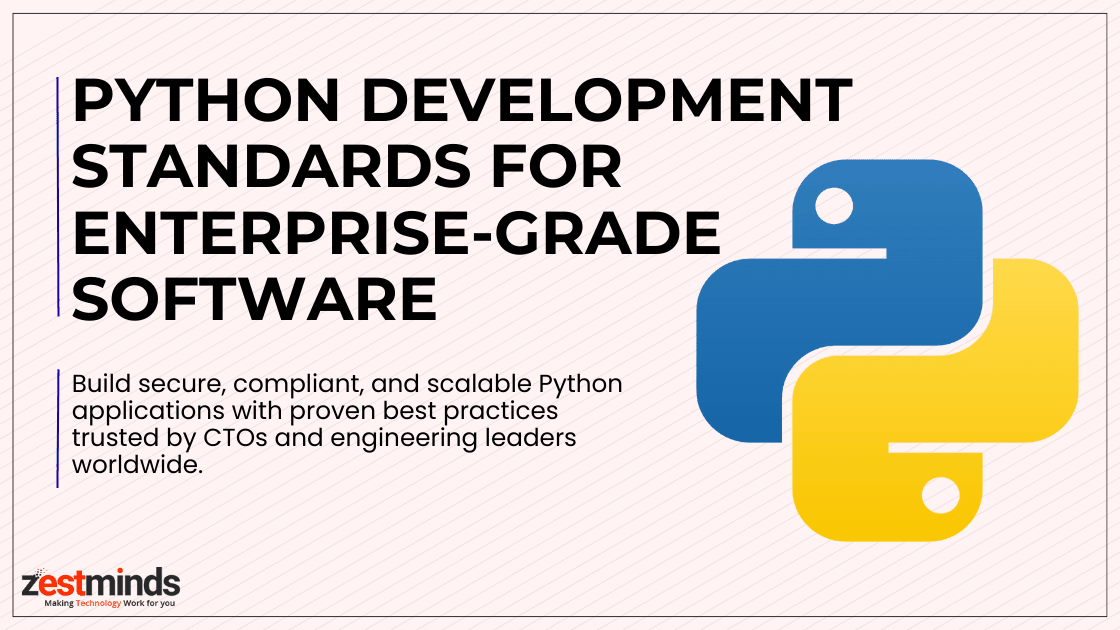How AI Is Transforming Legacy Web Systems (2025 Guide)
Struggling with outdated legacy systems that eat up your IT budget and slow down innovation? Discover how AI is reshaping the future of legacy modernization—faster, smarter, and cost-effective. In this guide, we break down real-world use cases, tools, and strategies to transform your old stack into an AI-powered asset.
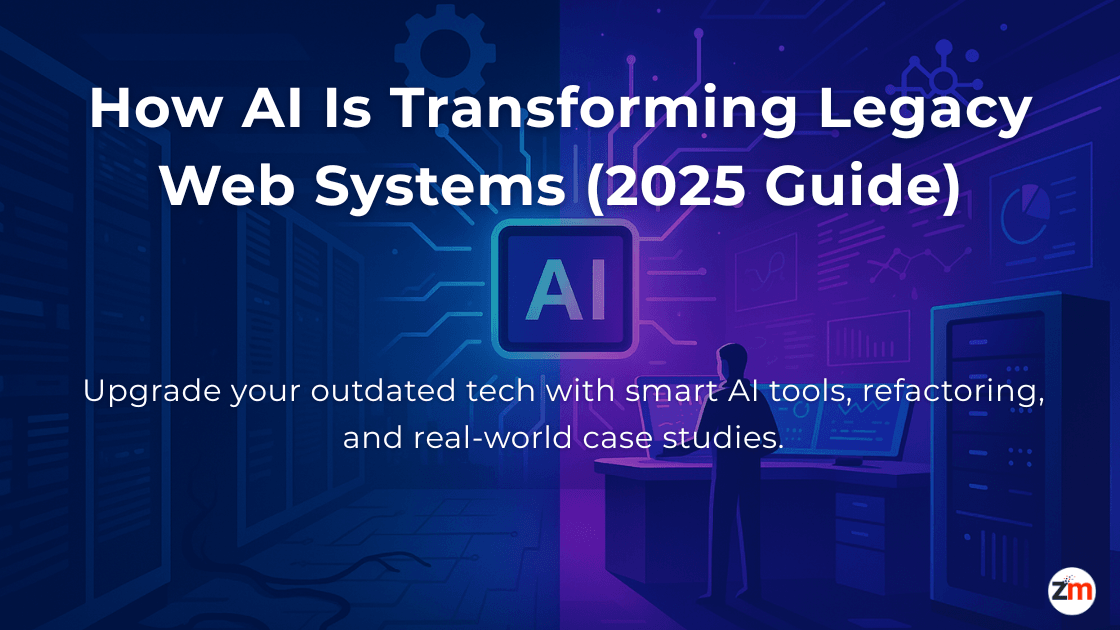
Why Legacy Systems Are Holding Back Innovation
Legacy systems are like that trusty old Ambassador car — reliable in the 90s, but a nightmare to drive on today’s highways.
Most large organizations still rely on legacy software built decades ago. We’re talking COBOL-based banking software, Java 1.x monoliths, and bulky .NET systems powering supply chains, insurance claims, and government records.
But here’s the kicker:
- They're hard to change. No APIs, no containerization, and definitely no cloud-native setup.
- They’re expensive to maintain. Up to 75% of IT budgets go into just keeping the lights on.
- They’re losing talent. Developers who built them? Mostly retired or on the verge.
- They’re risky. Vulnerable to modern threats due to outdated libraries and no patch pipelines.
Quick Fact: The U.S. Government Accountability Office (GAO) reported spending over $90 billion on maintaining legacy systems in 2023.
Sound familiar? You’re not alone. And no, you don’t have to burn it all down to start over.
Let’s explore how AI is becoming the silent superhero behind modernizing this legacy tech jungle.
The Role of AI in Legacy System Modernization
If legacy systems are dinosaurs, AI is the meteor — but a helpful one. It doesn't wipe things out. It evolves them.
What AI Actually Does in This Context
- Reads and interprets old code like a human would — but faster
- Suggests improvements, modern syntax, and cleaner architecture
- Finds bugs and inefficiencies your QA team would miss
- Generates tests for codebases that have zero test coverage
Here’s how it works in real scenarios:
1. AI-Powered Code Understanding
Tools like OpenAI’s GPT-4 and Claude 3 can now parse through tens of thousands of lines of legacy COBOL or Java code, summarize functions, and explain dependencies.
Imagine uploading your legacy backend code and getting this:
"This module calculates interest rates using outdated logic. Recommend replacing with compound function from standard library X."
It’s like onboarding a super-senior dev who already knows your system.
2. Refactoring Assistants
Platforms like OpenRewrite (Java) or Codemod (JavaScript) allow AI to scan, detect patterns, and auto-rewrite functions into modern syntax.
Combined with GitHub Copilot, this turns dev teams into refactoring machines without breaking things.
3. Legacy Database Mapping
Old systems often use flat-file databases or rigid SQL structures. AI can:
- Suggest modern ERD mappings
- Auto-generate ORM schemas
- Create migration scripts for PostgreSQL, MongoDB, or other modern stacks
Example: We modernized a hospital’s patient records system using AI to map over 1200 legacy data fields into a structured NoSQL model.
4. Conversational Interfaces to Databases
What if you could ask your old system:
"How many pending orders in Zone 3 last month?"
With tools like LangChain + GPT, and some smart prompt engineering, that’s now reality.
5. Accelerated Testing
Testing is often missing in legacy systems. Enter Diffblue Cover — an AI tool that generates thousands of unit tests automatically for Java code.
5 Ways AI Is Rewriting the Legacy Code Playbook
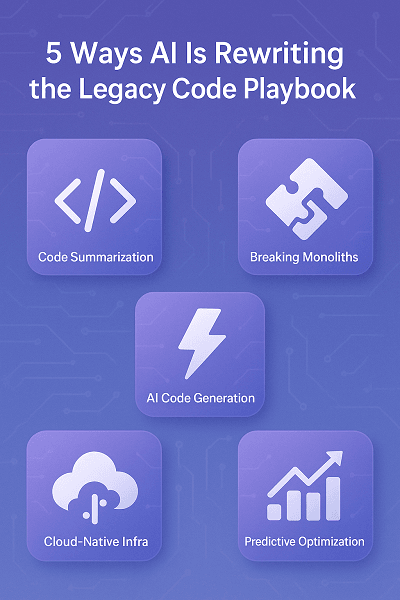
1. Code Summarization + Architecture Mapping
Using AI, we can:
- Visualize code dependencies
- Understand inter-service logic
- Spot tight coupling and spaghetti-code hotspots
Callout: Think of it like getting Google Maps for your source code.
2. Breaking Monoliths into Microservices
One of the toughest tasks is breaking apart massive legacy apps.
AI helps by:
- Identifying service boundaries
- Labeling domain logic
- Scaffolding new services
This is exactly the approach we used while designing scalable multi-tenant SaaS platforms for CRM use cases — breaking core logic into service clusters and building up from there.
3. AI Code Generation from Prompts
Try this:
"Build a password reset module with OTP and expiry in Laravel."
GPT-4 or Claude can instantly generate scaffolds, tests, and even a controller with route handling. Boom.
4. Cloud-Native Transformation
AI agents help by:
- Translating legacy deploy scripts into Dockerfiles
- Optimizing for EC2, Lambda, or Kubernetes
- Recommending cloud-native infra as code (Terraform, Pulumi)
These same strategies are discussed in our post on What Makes a Web App Successful in 2025.
5. Predictive Optimization
Rather than react to performance issues, AI helps predict them:
- Queries that will slow down
- Methods that may bottleneck
- Memory leaks
You don’t just fix issues. You avoid them.
Success Stories: Companies Leading the Way
Goldman Sachs
Migrated their old trading stack by using AI-led analysis to refactor their risk models into a more agile platform — saving 30% development effort.
JPMorgan Chase
Built their in-house AI, COiN, to scan contracts and flag anomalies. What took 360,000 hours now takes seconds.
British Airways
Used AI-backed agents to upgrade their ancient check-in systems, turning multi-minute support flows into single-click dashboards.
A HIPAA-Compliant AI Hospital System by Zestminds
In one of our most transformative client engagements, we helped a leading U.S. healthcare provider move away from a monolithic, legacy patient management system to a secure, AI-powered platform. By combining OCR, machine learning, and smart integrations with EHR tools, we not only modernized the tech but improved patient care and compliance.
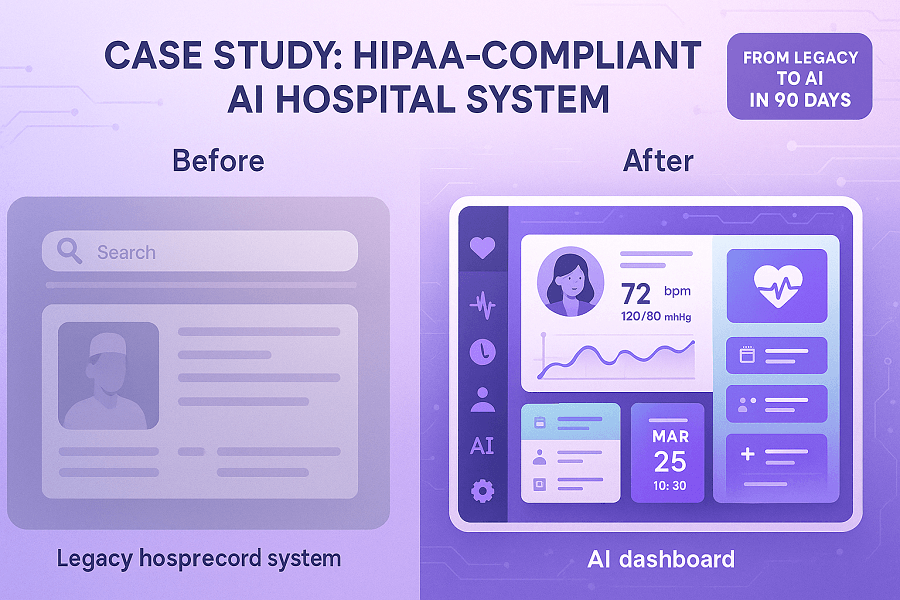
Read the full case study on how we modernized a legacy health system using AI.
For a broader view on automation tools used across departments, check out AI Tools for Business Workflow Automation (2025).
2025 AI Modernization Stack: What You Should Know
| Area | Tool | Use |
|---|---|---|
| Refactoring | GitHub Copilot, OpenRewrite | Context-aware code suggestions |
| Testing | Diffblue Cover | Auto unit test generation |
| Database | LangChain + GPT | Schema mapping, SQL agent |
| Cloud Infra | Amazon CodeGuru, Azure Copilot | Infra modernization and cost optimization |
Planning Your AI Modernization Roadmap
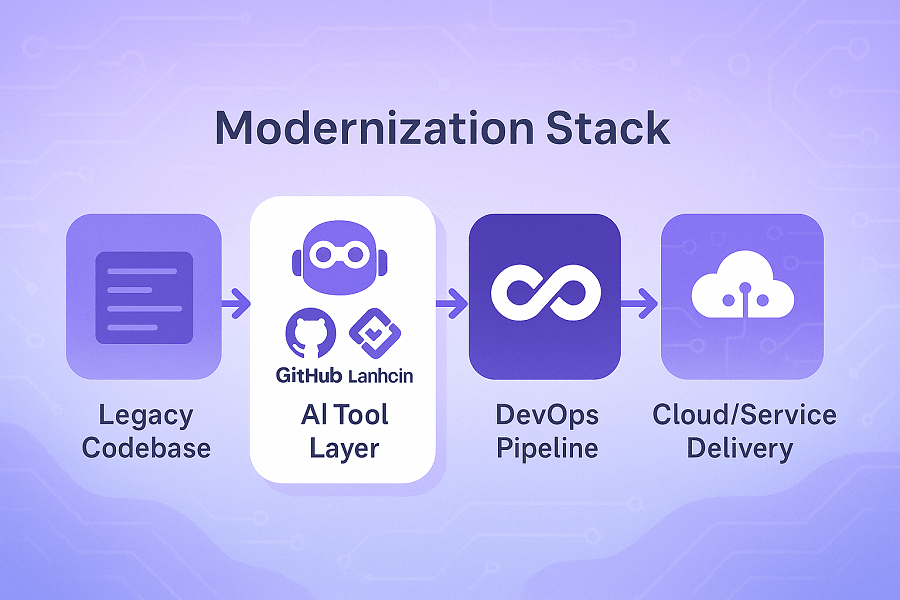
Pro Tip: Don’t modernize everything at once. Start small. Show wins. Then expand.
Step 1: Audit Your Legacy Stack
Make a list of:
- Core modules
- Outdated dependencies
- Codebase size (LOC)
- External system integrations
Step 2: Define Goals
Examples:
- Migrate database to cloud
- Refactor user auth module
- Add AI-based analytics
Step 3: Tool Selection
Choose tools that:
- Fit your tech stack
- Integrate easily
- Come with active support or community
For instance, we used GPT agents in tandem with Zapier to build lightweight AI-powered utilities without touching the legacy core — explained in our blog on AI Tools + Zapier.
Step 4: Phased Rollouts
Start with:
- Reporting modules
- Auth and user systems
- Notification engines
Step 5: Upskill Your Team
Host workshops, train on prompt engineering, and introduce agents like Copilot into daily workflows.
Take Action: Download the Legacy Modernization Blueprint
Still running your business on systems built before smartphones existed?
It’s time to pivot.
We’ll review your system and show you where AI can save time, money, and hair loss.
Conclusion: The AI Advantage
Modernization doesn’t mean deleting everything.
It means:
- Keeping what works
- Upgrading what slows you down
- Future-proofing your tech for the next 10 years
And AI makes all of this faster, cheaper, and safer.
"Legacy code isn’t a liability. It’s a launchpad — if AI is your co-pilot."
Ready to make the leap? We’ve got your back.
FAQs
1. Can AI fully replace my legacy system?
Not directly, but it can fast-track modernization, generate new modules, and minimize downtime.
2. What tools work best for legacy code updates?
GitHub Copilot, Diffblue Cover, Claude 3, LangChain, and OpenRewrite are excellent.
3. Will this require retraining my team?
Only partially. Most tools are intuitive and AI acts as an assistant — not a replacement.
4. What’s the ROI of AI-led modernization?
Teams have seen up to 40–60% reduction in modernization costs compared to manual rewriting.
5. How risky is it to run AI on production systems?
As long as changes go through code review, testing, and staging — risk is minimal.
6. Who benefits most from this?
Finance, insurance, healthcare, logistics — basically any enterprise running monolithic or outdated stacks.
Need help modernizing your legacy system with AI?
Let’s talk →
We’ll audit your stack and show you where AI can help within weeks, not months.
Related Services
To explore how AI can revolutionize your business
AI powered Whatsapp Chatbot developed by Zestminds
 Check Now
Check Now

Shivam Sharma
About the Author
With over 13 years of experience in software development, I am the Founder, Director, and CTO of Zestminds, an IT agency specializing in custom software solutions, AI innovation, and digital transformation. I lead a team of skilled engineers, helping businesses streamline processes, optimize performance, and achieve growth through scalable web and mobile applications, AI integration, and automation.
Stay Ahead with Expert Insights & Trends
Explore industry trends, expert analysis, and actionable strategies to drive success in AI, software development, and digital transformation.
